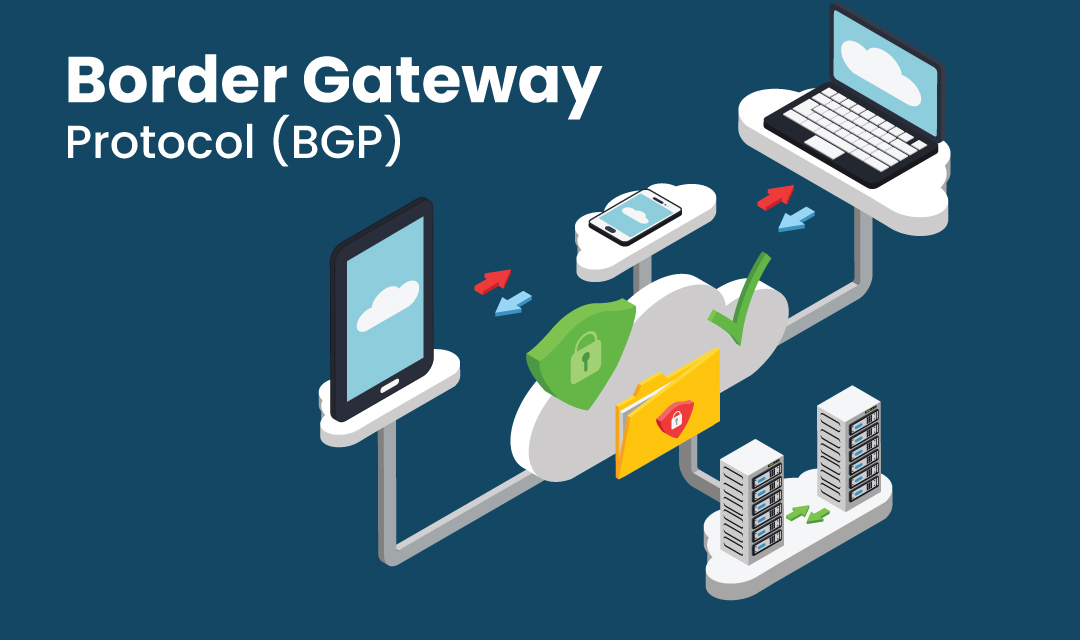
To send data packets from one IP address to another IP address, the intermediate routers must know how to pass the data to the next-hop so that the data will finally arrive at the destination IP address. The IP address is the destination address where the data is delivering to, and the Internet must know how to deliver the data to the final location. Border Gateway Protocol (BGP) is the protocol that helps routers find the shortest path to the destination, and also provides an alternate route if the shortest path is blocked. In other words, BGP is guiding routers on how to get to the final IP address.
In technical term, the BGP is the protocol used to exchange routing information between the neighboring autonomous systems (ASes). An AS is a large network comprised of a pool of IP prefixes (blocks). Internet is made up of ASes that are interconnected throughout the world. Since BGP is used to route traffic between ASes, the network administrators of large corporations and ISPs require provisioning BGP. Small organizations, schools, and individuals will not likely need to provision BGPs as they will be sitting inside a single AS.
What is Autonomous System?
The Internet is a global network comprised of millions of smaller networks, and those smaller networks are broken into a manageable autonomous system (AS) sharing a common routing policy. Each AS serves a set of IP prefixes, and is assigned to a large organization or an ISP.
We can make a simple analogy to explain an Autonomous System better. An IP address is the address of a computer where an email will be delivered. A postal address is the physical address of a house where mail will be delivered. A post office serves a region of area where mail delivery is divided. An AS is a region like a post office where a set of IP addresses will be served. So, think of AS as a postal service region where a post office will be serving. The AS will be serving both IPv4 and IPv6 addresses.
When new construction is built with additional houses, the postal service must cover the new areas. Similarly, when a new set of IP addresses are allocated within the region, the AS must be updated to serve new IP prefixes that are newly allocated and the BGP must be configured to accommodate the new IP routes.
An AS is assigned to large corporations, universities, governments, and ISPs; and they must register AS with RIR which is governed by the IANA and obtain an ASN. The organization who owns ASN is responsible for managing BGP with routing information within the AS. The BGP is used to exchange routing informationn between neighboring ASes.
BGP can break Internet
As routers rely on BGP to find the best route to the destination, an incorrectly configured BGP can break the Internet. Routes are exchanged between the autonomous systems, and traffic is transmitted over the TCP/IP. The routes advertised by BGP are trusted, and misconfigured (intentionally or unintentionally) BGP will send data packets to a wrong path and will cause a delay or will never make it to the final destination.
Conclusion
BGP is a routing protocol that makes the Internet work. The Internet is divided into millions of autonomous systems (AS), and an AS is assigned to a large corporation, government, or an ISP. Each AS is responsible for maintaining a BGP with an up-to-date routing table, and this routing information is shared between the neighboring autonomous systems for healthy routing of TCP/IP traffic.
Share this post
Leave a comment
All comments are moderated. Spammy and bot submitted comments are deleted. Please submit the comments that are helpful to others, and we'll approve your comments. A comment that includes outbound link will only be approved if the content is relevant to the topic, and has some value to our readers.

Comments (0)
No comment